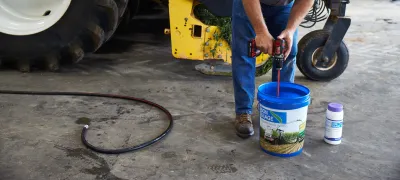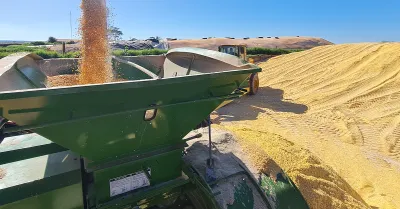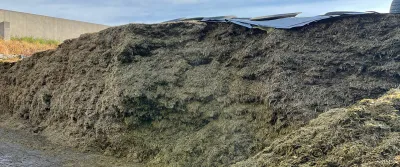A Little Silage Flexibility Goes a Long Way
On the dairy farm, flexibility is a must. You never know what the weather might throw at you, what sort of animal issues you might have to deal with, or when your equipment might break down. Any way you can be flexible will inevitably help you in the long run. Your silage is no exception.

Sometimes, you might run into the need to feed corn silage sooner than you’d planned. This can be a problem on many farms. It’s not as if you can politely ask your pile to speed up. Typically, it’s 6-8 week fermenting period so that you can open it sooner.
When the need arises, how do you make your pile more flexible?
“One of the topics I discuss with my customers is “prepiling,” says Dennis Pierick, a BONSILAGE Sales Rep. “While the rest of your corn silage is fermenting, you can already be feeding out from another pile that is ready to face the elements.”
But how does one come upon this level of flexibility? With an inoculant that works faster. While the bulk of the pile is taking the customary 6-8 weeks, your prepile that’s been treated with BONSILAGE SPEED C can be ready to feed out in as little as 14 days. SPEED C’s exclusive strain of bacteria, Lactobacillus diolivorans, helps ripen silage faster than other products with subsequently high aerobic stability.
How does the flexibility offered by SPEED C help on the farm, other than being able to feed safe silage quickly?
Well, it gives you options. While SPEED C ripens silage in 14 days, a dairy producer doesn’t HAVE to take full advantage of that quickness. You can adjust your feed-out to match your inventory. Wait 3 or 4 weeks if you have to; the point is that silage treated with SPEED C will be ready when you and your animals need it, not two months later. That flexibility gives you options now, and it can give you options when planning as well.
Fig. 1: Fermentation profile of corn silage ensiled for 14-days
For farms where space might be an issue, the flexibility offered by SPEED C can make an even bigger difference. It’s not a need for every farm, but when creating BONSILAGE SPEED C, we asked ourselves, how do we help every farm be just a little bit more flexible?
You can’t control the weather. You can’t control the tractor getting stuck in a soggy field. There’s so much you can’t control on the farm. But with a little bit of flexibility on the silage front, you can take back a little bit of control regarding your feed.
If you would like to get more information about our inoculant BONSILAGE SPEED C, click HERE. Additionally, stay tuned for new updates about our webinar recap article.


